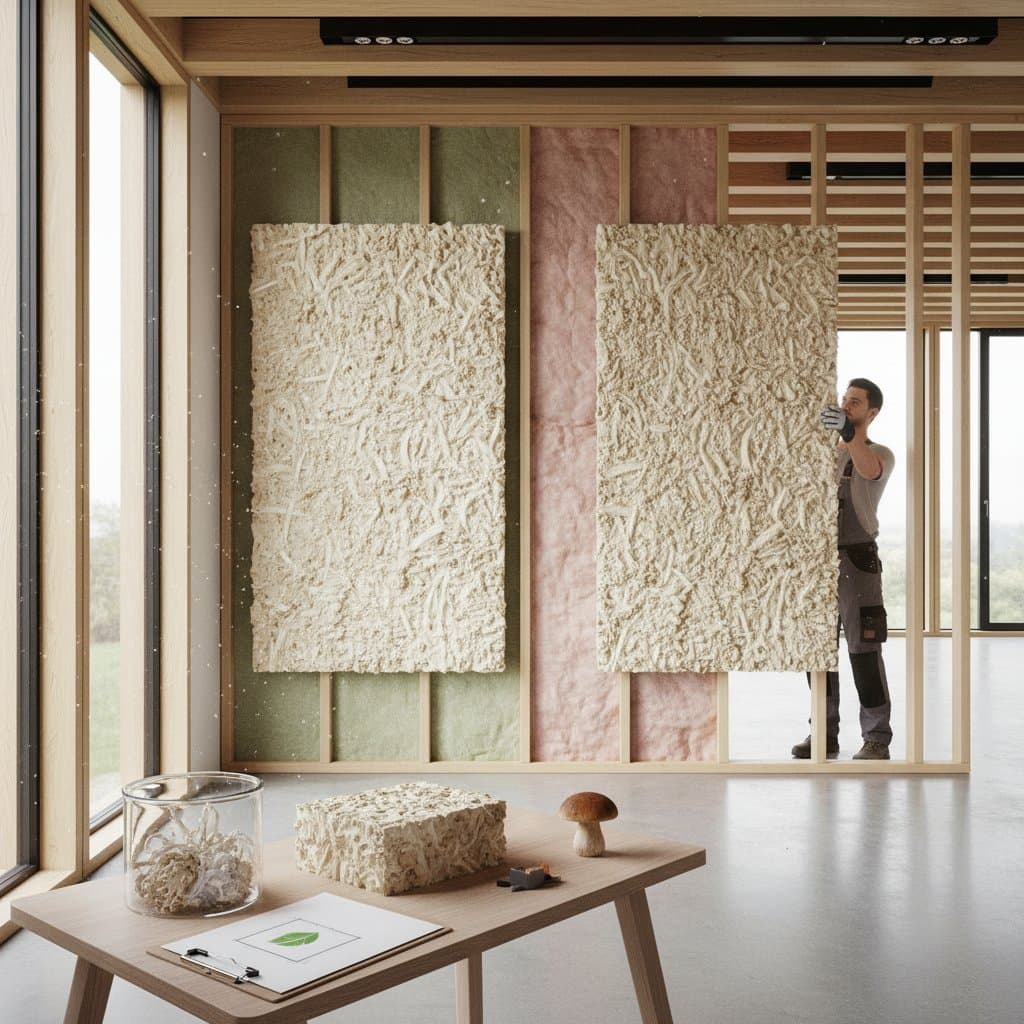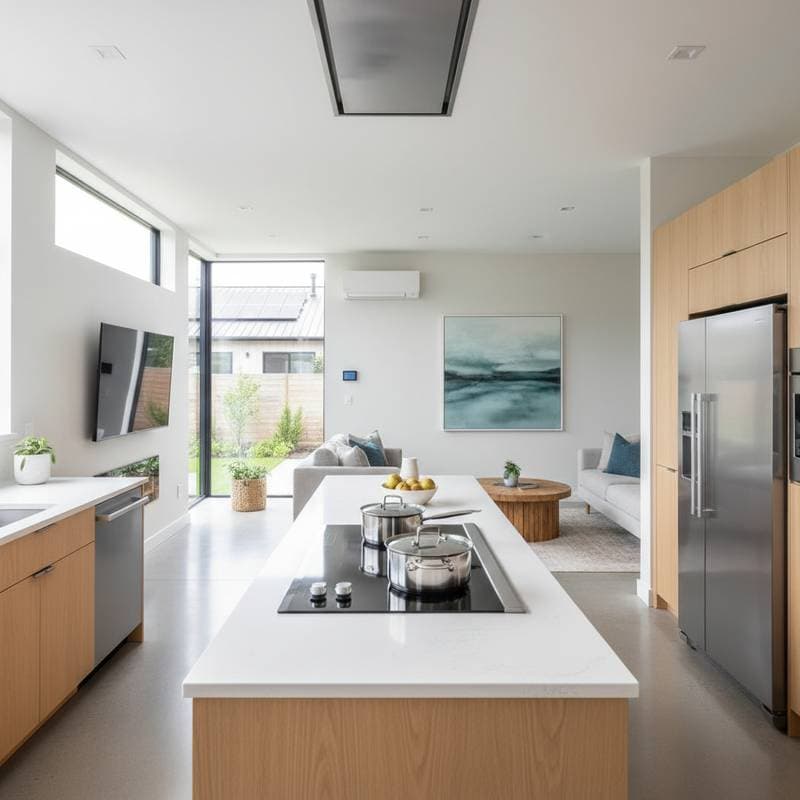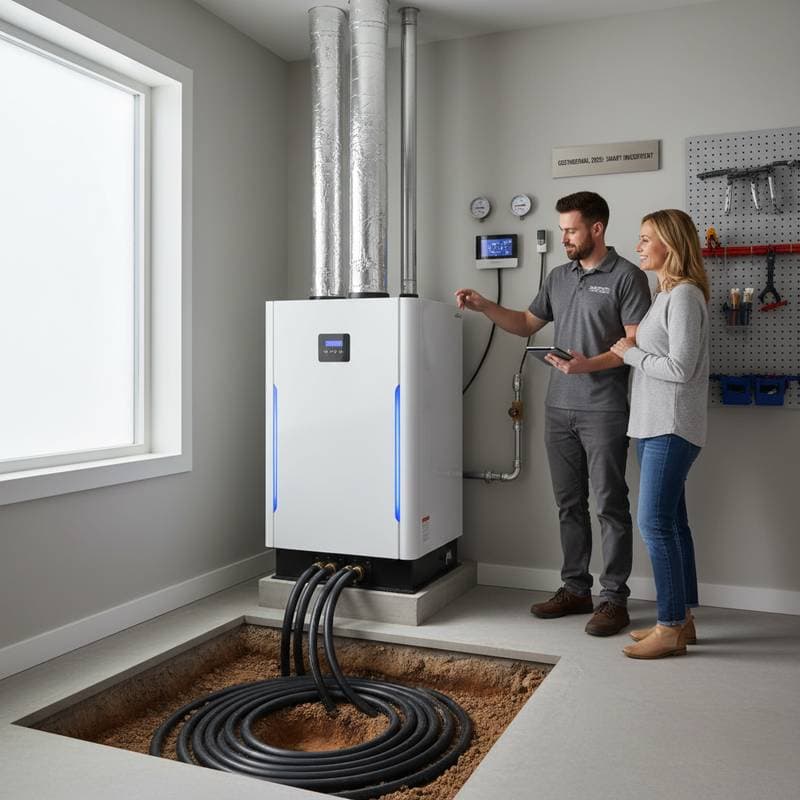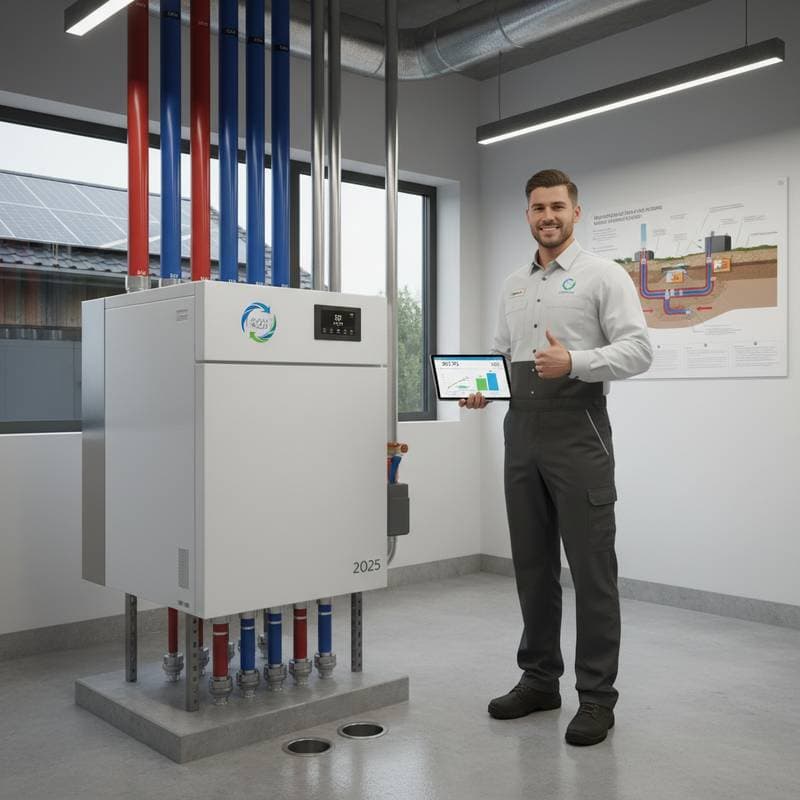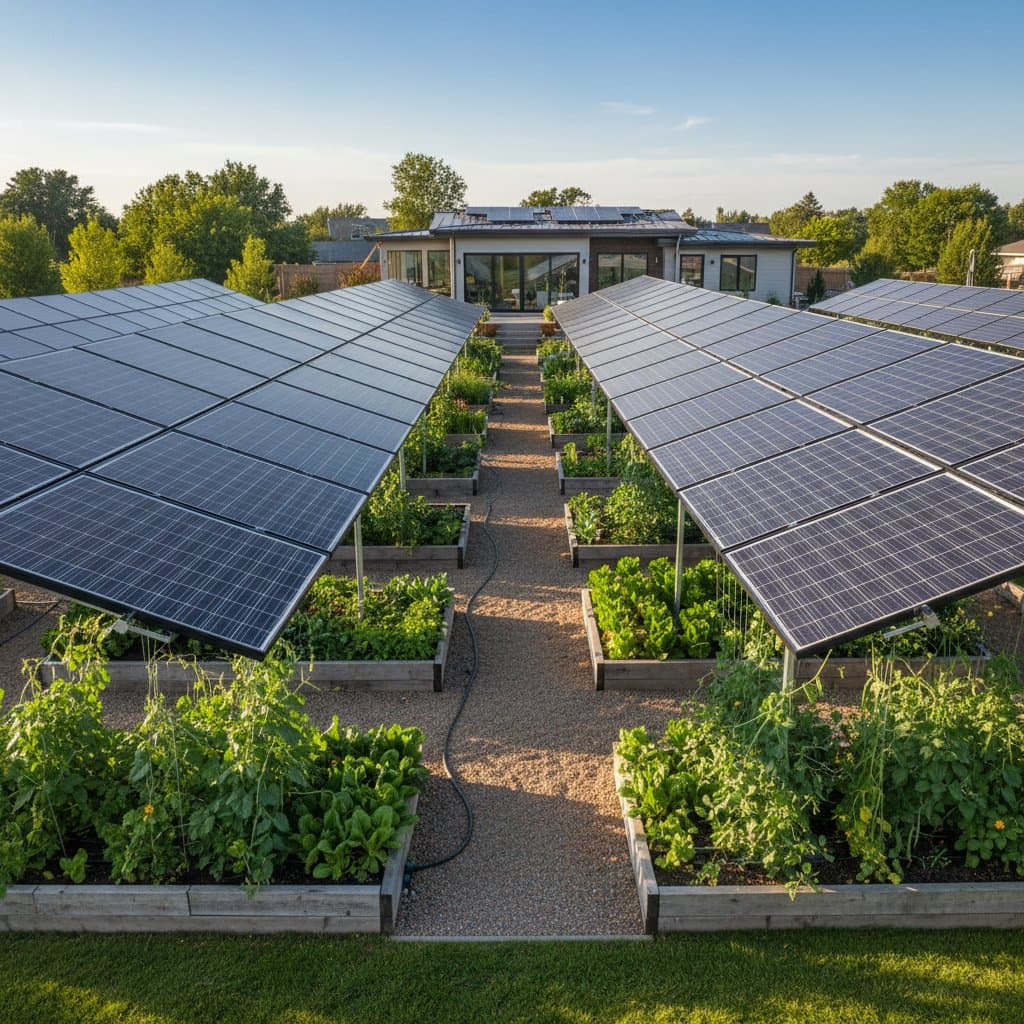Key Points
- Homeowners achieve reductions in cooling expenses of up to 50 percent through geothermal cooling systems.
- Ground-source heat pumps deliver reliable comfort, reduced maintenance expenses, and enduring performance.
- Emerging rebates and incentives render installations more accessible than previously.
- Optimal design, soil evaluation, and expert installation prove vital for maximum efficiency.
Insights from a Green Building Specialist
In my role as a green building specialist, I observe numerous homeowners facing escalating summer energy expenses. Intense outdoor heat forces air conditioners to operate excessively, depleting finances and testing endurance. However, directly below the surface exists a renewable resource ready to maintain consistent indoor comfort throughout the year. Envision entering a refreshingly cool space sustained not by variable grid power but by the earth's unchanging thermal profile. This represents the subtle innovation of geothermal cooling, which utilizes the planet's inherent stability to ensure an efficient and tranquil living area.
Limitations of Conventional Cooling Methods
Standard air conditioners contend with environmental extremes. Elevated outdoor temperatures demand increased effort, consuming electricity at premium rates during widespread usage periods. Such demands accelerate compressor degradation and inflate utility charges. In areas with high humidity, suboptimal cooling elevates interior moisture, fostering mold growth and unease. Moreover, these systems experience efficiency declines of approximately five percent each year without proper upkeep. Frequent replacements every ten years ensue, perpetuating an expensive pattern that geothermal alternatives disrupt completely.
Mechanics of Geothermal Cooling
Geothermal systems, also known as ground-source heat pumps, exploit the earth's consistent subsurface temperatures to transfer heat rather than generate it anew. Underground soil sustains temperatures between 45 and 75 degrees Fahrenheit, varying by location. The setup circulates a water-based fluid via buried loops, facilitating heat absorption or dissipation through thermal conduction. During summer months, excess indoor heat moves to the ground, establishing a dependable cooling process with limited dependence on ambient air conditions.
Based on extensive field experience, consider geothermal loops as an invisible thermal storage for the home. They harness steady renewable energy, independent of solar or wind variability, and function with subdued noise levels and scant upkeep requirements.
Strategies for Optimizing Energy Savings
-
Perform a Comprehensive Site Evaluation
Engage professionals to analyze soil type, groundwater presence, and available space for loops. This assessment aligns system capacity precisely with cooling needs. -
Select Appropriate Loop Configurations
- Horizontal loops prove ideal for expansive properties with sufficient landscaping.
- Vertical loops accommodate smaller urban lots or challenging rocky soils.
- Pond loops offer high efficiency near accessible water bodies.
-
Incorporate Intelligent Thermostat Systems
Pair units with adaptive thermostats that adapt to occupancy routines. Such integration yields additional savings of 10 to 15 percent. -
Implement Zoned Temperature Management
Segment the home into distinct areas to cool occupied spaces exclusively. This approach prolongs equipment durability and minimizes runtime. -
Combine with Solar Power Generation
Integrate with solar installations to realize near-zero net energy consumption, fostering a comprehensively sustainable habitat.
Essential Factors for Residential Implementation
Initial installation expenses typically span $15,000 to $30,000, influenced by soil properties, system scale, and site logistics. Although the upfront investment appears substantial, energy reductions enable payback periods of five to ten years. Regional rebates, federal tax incentives, and sustainability grants may cover up to 40 percent of costs. Confirm qualification via local energy authorities or accredited providers.
Upkeep remains straightforward. Absent outdoor units vulnerable to elements, parts endure longer with infrequent interventions. Systems often perform effectively for over 25 years. Compared to conventional air conditioning, savings reach 50 percent, especially in regions with extended warm seasons.
Environmental and safety advantages stand out prominently. Units employ non-hazardous antifreeze mixtures and secure piping networks, minimizing atmospheric refrigerant emissions. Additionally, the absence of external fans eliminates operational noise, enhancing residential tranquility.
Steps to Attain Sustainable Indoor Comfort
Embracing geothermal cooling extends beyond economics to enhance daily living. It secures unwavering temperature control, stabilizes utility expenditures, and fulfills the appeal of utilizing earth's thermal constancy for superior air quality. As a green building specialist, I advise scheduling consultations with certified installers prior to peak season to tailor loop layouts and configurations to site specifics.
Itsacoolerplanet.com facilitates connections with qualified regional experts versed in geological factors, incentive applications, and precise system scaling. Request a complimentary assessment to evaluate customized solutions. Post-installation, benefits emerge promptly, from unobtrusive operation to noticeable declines in billing statements.
Transform your residence into an exemplar of eco-conscious efficiency, where each cooled area reflects harmony with natural resources.
Frequently Asked Questions on Geothermal Cooling
How long does installation of a geothermal cooling system require?
Most home installations span one to two weeks, contingent on loop type and geological features. Vertical configurations may extend timelines slightly due to drilling operations.

